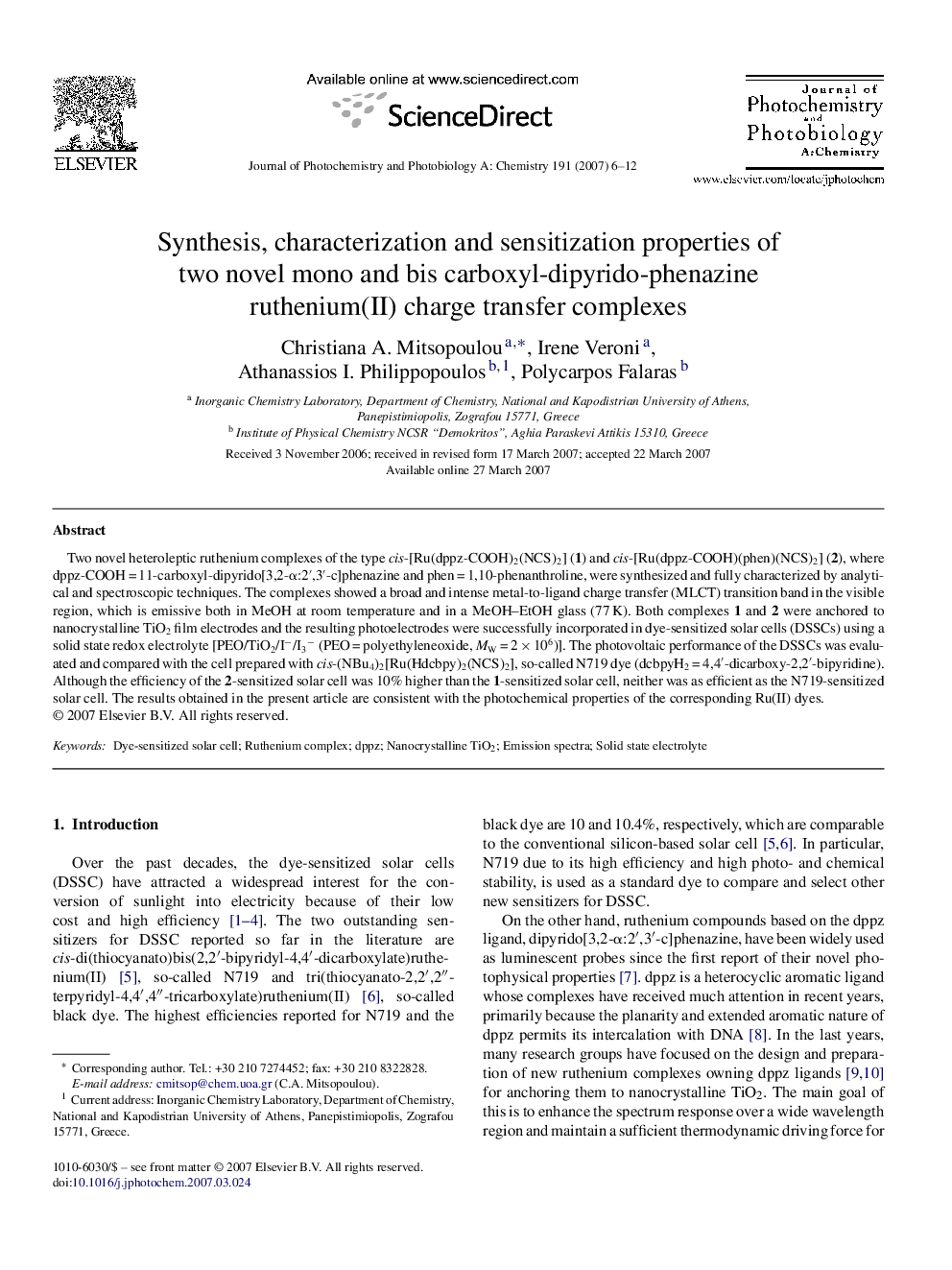| کد مقاله | کد نشریه | سال انتشار | مقاله انگلیسی | نسخه تمام متن |
|---|---|---|---|---|
| 28864 | 44099 | 2007 | 7 صفحه PDF | دانلود رایگان |

Two novel heteroleptic ruthenium complexes of the type cis-[Ru(dppz-COOH)2(NCS)2] (1) and cis-[Ru(dppz-COOH)(phen)(NCS)2] (2), where dppz-COOH = 11-carboxyl-dipyrido[3,2-α:2′,3′-c]phenazine and phen = 1,10-phenanthroline, were synthesized and fully characterized by analytical and spectroscopic techniques. The complexes showed a broad and intense metal-to-ligand charge transfer (MLCT) transition band in the visible region, which is emissive both in MeOH at room temperature and in a MeOH–EtOH glass (77 K). Both complexes 1 and 2 were anchored to nanocrystalline TiO2 film electrodes and the resulting photoelectrodes were successfully incorporated in dye-sensitized solar cells (DSSCs) using a solid state redox electrolyte [PEO/TiO2/I−/I3− (PEO = polyethyleneoxide, MW = 2 × 106)]. The photovoltaic performance of the DSSCs was evaluated and compared with the cell prepared with cis-(NBu4)2[Ru(Hdcbpy)2(NCS)2], so-called N719 dye (dcbpyH2 = 4,4′-dicarboxy-2,2′-bipyridine). Although the efficiency of the 2-sensitized solar cell was 10% higher than the 1-sensitized solar cell, neither was as efficient as the N719-sensitized solar cell. The results obtained in the present article are consistent with the photochemical properties of the corresponding Ru(II) dyes.
Journal: Journal of Photochemistry and Photobiology A: Chemistry - Volume 191, Issue 1, 7 September 2007, Pages 6–12